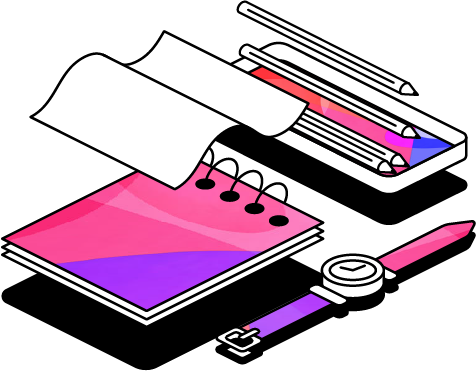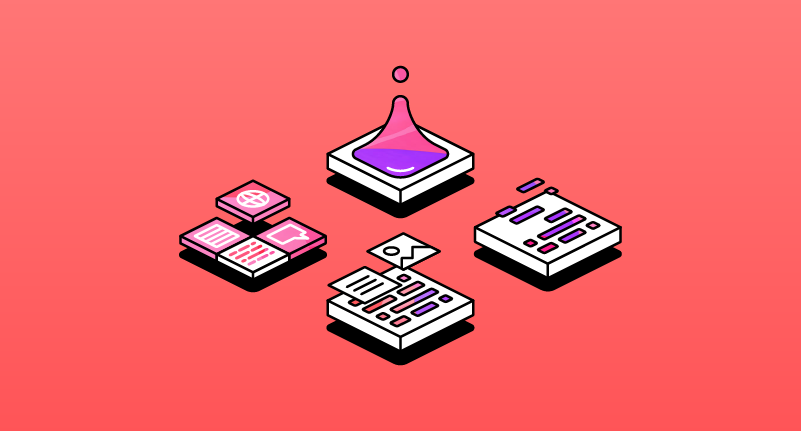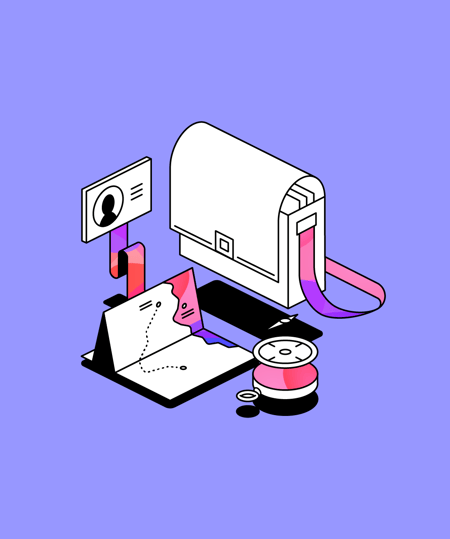Tackling information overload in class
It’s normal to feel overwhelmed in a lecture. But like most problems, it’s easier to handle when you break it down.
 3 min read
3 min read
 Published: 9 Sep 2021
Published: 9 Sep 2021
 Luke Garbutt
Luke Garbutt

.png)
It happens to us all
You know the speaker’s making an important point, but you can’t process it quickly enough. Lowkey panic sets in. You’re worried you’re missing information that’ll help you out later.
It’s something every learner faces. In fact, in a traditional lecture, you could say it’s unavoidable.
But here’s the thing: like any problem, information overload becomes a lot easier when you break it down.
What information overload actually is
Any time you’ve wished you could ask a professor to slow down a little, it’s probably down to one of two things.
1. Creating connections
Our brains work a little like Wikipedia - everything is linked together. When we come across something entirely new, we try to create a new link with information already encoded into our brains.
It’s why stories and analogies help us make sense of complex ideas. We use the familiar, relatable story as a wardrobe to hang the new things we’ve just come across.
But if we’re encountering a lot of new information very quickly, it can make us feel overwhelmed.

2. Leaving meaning behind
Just as every society in history has used examples, stories and metaphors to communicate higher-level ideas, so professors use a series of secondary points, examples and demonstrations to make the content come alive for the learner. It’s what they do best.
Unfortunately, our typical way of dealing with lots of information is to try and get down ‘the facts’; those bullet points we think will best help us understand and remember the content.
As a result, students typically leave the examples and analogies behind, meaning all that rich detail and fuel for the imagination is lost. So, though you’ll probably get the surface-level points, they might not be much help without a key to understanding them later.

Dealing with the problem
The best way to deal with information overload is to help your brain make important connections, while preserving the points that really help you understand new, complex information.
But you can’t do that all at once.
To tackle information overload, you need a process. You also need a scaffold.
Your learning delivery system
We built Glean to help you deal with info overload effortlessly and achieve more at college.
It’s simple to use Glean. But by making use of its features, you’re guiding yourself toward better learning.
It’s built on a 4-step learning process proven to help you remember more information for longer.
Let’s take a look at it.

Capturing info
So the first step is to capture information from the class. But you’ll need a method, and that’s where most learners trip up.
Taking notes by hand has its problems, and many learners struggle with it.
Remember we spoke about students leaving valuable information (like examples and secondary points) behind? The fact is that most students leave ⅔ of important information in the classroom.
The more of that information you can capture, the better set you are after class.
Glean makes this easy by capturing every word. But it also allows you to attach quick notes and labels to important moments so you can record your own thoughts and create points to return to later.
This helps you both
- Create connections
- And preserve what matters
Organizing what you’ve captured
It’s no good just to capture everything in one big mass of messy info. Without organization, you’ll never make sense of it.
Organization helps with creating those connections we spoke about earlier. Thinking about how information can be categorized, separating the key points from the secondary, and generally introducing order to the chaos will help you make those connections.
Glean gives you a simple set of tools to make organization come naturally. The concentrated dose of information you were struggling with in class quickly becomes a multimedia set of notes, all linked together and easy to navigate.
This helps you both
- Break info down
- And link it together
Refining the material
You know the one big mistake learners make with their notes? Rereading and highlighting. Research has shown that it’s just about the least effective way of remembering information later. What you need to do is refine your notes.
The question here is what you’ve personally learned from this material. You might have a long, unbroken section on a specific lecture point. You captured everything you needed to at the time, now you need to condense it.
This is about establishing exactly what you need from your notes, so that they’ll become a great study tool in their own right.
With Glean, this is the time to listen back to those key moments, adding text notes and any information you’ve come across since that will come in handy for your learning.
This helps you
- Summarize key pieces of information
- And create a killer set of notes
Applying your knowledge in your studies
You’ve got a killer set of organized and refined notes. That’s great! The next step is to apply your knowledge into your study process.
How do you normally study? Are you someone that has a set time of the week for it? Or do you tend to cram toward exams? No matter how you study, your finished notes can be a real weapon.
By now, you should be confident that your notes contain everything you need for that particular topic. Applying your knowledge is about making them relevant and usable at each stage of your studying.
This helps you
- Create a workspace with all you need for studying
- And build your notes seamlessly into your learning process

Putting it all together, we get CORA
CORA is your 4-step antidote to information overload.
It’s a process we’ve developed to help you navigate lectures effectively and improve your learning.
By following these steps, you’re taking control over a situation that can leave you feeling powerless.
It’s the best help you can give yourself in the classroom. And you can try it for free.
Written by Luke Garbutt

More from Better Learning
View All
 2 min read
2 min read
3 student-proven time management techniques that work
From navigating demanding college schedules to excelling in the professional sphere, time management is a vital skill. Glean's student ambassador, Sherrie Zhao, shares her first-hand experiences and proven techniques for mastering this essential skill, offering valuable insights for students and professionals alike.

 5 min read
5 min read
How Glean helps first generation students overcome challenges
Being the first in your family to step onto a university campus is a triumph. But beneath the pride lies a unique landscape of pressures and uncharted territories. This blog explores the hurdles first gen students encounter and how Glean provides the support needed to unlock their full potential.

 2 min read
2 min read
Master class notes with text formatting
Your note taking just got an upgrade! We’re thrilled to announce that text formatting features are now live in your app. Let's take a look at how you can use text formatting to make the most of your notes.





